
Sir Norman Bishop Hartnell was a leading British fashion designer, best known for his work for the ladies of the royal family. Hartnell gained the Royal Warrant as Dressmaker to Queen Elizabeth in 1940, and Royal Warrant as Dressmaker to Queen Elizabeth II in 1957. Princess Beatrice also wore a dress designed for Queen Elizabeth II by Hartnell for her wedding in 2020.
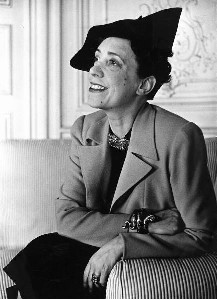
Elsa Schiaparelli was an Italian fashion designer from an aristocratic background. She created the house of Schiaparelli in Paris in 1927, which she managed from the 1930s to the 1950s. Starting with knitwear, Schiaparelli's designs celebrated Surrealism and eccentric fashions. Her collections were famous for unconventional and artistic themes like the human body, insects, or trompe-l'œil, and for the use of bright colors like her "shocking pink".

Madeleine Vionnet was a French fashion designer best known for being the “pioneer of the bias cut dress”, Vionnet trained in London before returning to France to establish her first fashion house in Paris in 1912. Although it was forced to close in 1914 at the outbreak of the First World War, it re-opened after the war and Vionnet became one of the leading designers of 1920s-30s Paris. Vionnet was forced to close her house again in 1939 at the start of the Second World War and she retired in 1940.
Celia Birtwell, CBE, is a British textile designer and fashion designer, known for her distinctive bold, romantic and feminine designs, which are influenced by Picasso and Matisse, and the classical world. She was well known for her prints which epitomised the 1960s/70s. After a period away from the limelight, she returned to fashion in the early 21st century.

History of fashion design refers specifically to the development of the purpose and intention behind garments, shoes, accessories, and their design and construction. The modern industry, based around firms or fashion houses run by individual designers, started in the 19th century with Charles Frederick Worth who, beginning in 1858, was the first designer to have his label sewn into the garments he created.
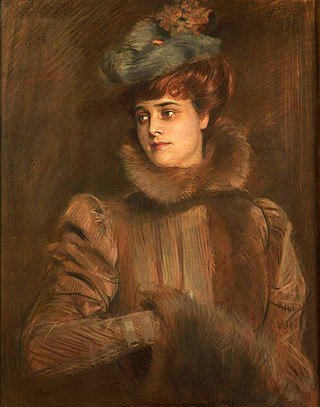
Louise Chéruit, also known as Madame Chéruit and often erroneously called Madeleine Chéruit, was a French fashion designer. She was among the foremost couturiers of her generation, and one of the first women to control a major French fashion house. Her salon operated at Place Vendôme in Paris under the name Chéruit from 1906 to 1935. She is best remembered today as the subject of a number of portraits by Paul César Helleu and for the appearance of her name in two celebrated works of literature, Marcel Proust's Remembrance of Things Past (1910) and Evelyn Waugh's Vile Bodies (1930). Her name is also frequently associated with the fashion photography of Edward Steichen, whose favorite model, Marion Morehouse, often wore gowns from the house of Chéruit for Vogue magazine in the 1920s. One particular Steichen image has become iconic – Morehouse in a jet-beaded black net Chéruit dress, first published in 1927.

Victor Frank Stiebel was a South African-born British couturier. A founder member of the Incorporated Society of London Fashion Designers, he was among the top ten designers in Britain during the war and post-war years. Among his more notable designs were the uniforms for the Women's Royal Naval Service in 1951 and the going-away outfit for Princess Margaret's wedding in 1960.
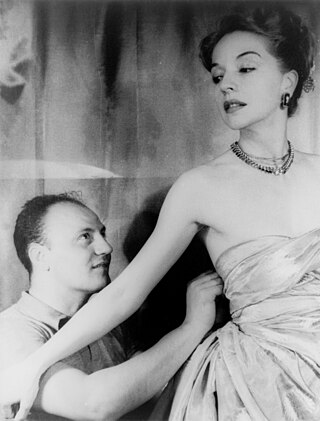
Haute couture is the creation of exclusive custom-fitted high-end fashion design. The term haute couture generally refers to a specific type of upper garment common in Europe during the 16th to the 18th century, or to the upper portion of a modern dress to distinguish it from the skirt and sleeves. Beginning in the mid-nineteenth century, Paris became the centre of a growing industry that focused on making outfits from high-quality, expensive, often unusual fabric and sewn with extreme attention to detail and finished by the most experienced and capable of sewers—often using time-consuming, hand-executed techniques. Couture translates literally from French as "dressmaking", sewing, or needlework and is also used as a common abbreviation of haute couture and can often refer to the same thing in spirit.

Simone Mirman (1912–2008) was a Paris-born milliner based in London, chiefly known for her designs for the British royal family.

John Cavanagh was an Irish couturier of the 1950s and 1960s. A member of the Incorporated Society of London Fashion Designers (IncSoc), his style has been described as reflecting Parisian chic. He designed the wedding dresses for the Duchess of Kent in 1961 and for Princess Alexandra in 1963.

Maytime in Mayfair is a 1949 British musical romance film directed by Herbert Wilcox and starring Anna Neagle, Michael Wilding, Nicholas Phipps, and Tom Walls. It was a follow-up to Spring in Park Lane.

The Incorporated Society of London Fashion Designers was a membership organisation founded in 1942 to promote the British fashion and textile industry and create luxury couture to sell abroad for the war effort. It aimed to build the relationship between government and fashion industry and represent the interests of London couturiers. The organisation continued after the war and sought to present itself as an alternative to the revived Paris couture industry.

Henry Digby Morton (1906–1983) was an Irish fashion designer and among the leading names of British couture in the period from 1930-50. He was also among the pioneers of ready-to-wear fashions in the 1950s. Successful on both sides of the Atlantic, he redefined women's suits and tailoring, earned himself the moniker 'Daring Digby' for his US fashion venture and helped to establish the Incorporated Society of London Fashion Designers, an early forerunner of the British Fashion Council.
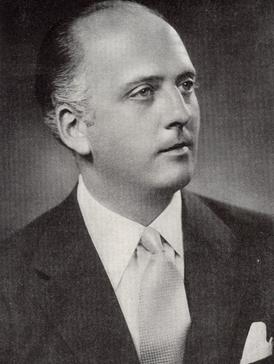
Charles Southey Creed was a British fashion designer. Born into the longstanding tailoring house of Henry Creed & Company in Paris, he launched his eponymous label in London in 1946. The first elected member of the Incorporated Society of London Fashion Designers, he had success in both Britain and the United States.

Peter Russell (1886–1966) was a London-based English fashion designer and a founder member of the Incorporated Society of London Fashion Designers. Running a major couture house from the 1930s to the early 1950s, he has been described as a: "designer of beautiful, jauntily sophisticated women's suits".

Elspeth Champcommunal was a British fashion designer and the first editor of Vogue in Britain. She was influential as a designer in her own right in Paris, with an eponymous brand, later taking on the role of chief designer of Worth London. She was among the founder members of the Incorporated Society of London Fashion Designers (IncSoc) and remained involved with the organisation during her tenure at Worth London.

Giuseppe Mattli (1907–1982), usually known as Mattli or Jo Mattli, was a Swiss-born and London-based fashion designer known for his couture designs and, later, his ready-to-wear clothing and couture patterns.

Angele Delanghe, was a Belgian fashion designer based in London who ran an eponymous label from the late 1930s to the mid 1960s and also produced couture designs for the West End department store Fortnum & Mason.
Neillí Mulcahy was an Irish designer. In 1962, Mulcahy co-founded the Irish Haute Couture Group with Ib Jorgensen and Irene Gilbert.
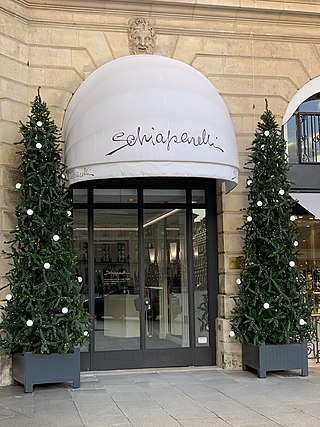
Maison Schiaparelli is a haute couture house created by avant-garde Italian fashion designer Elsa Schiaparelli in 1927, and moving towards luxury ready-to-wear after being bought in 2007 by Diego Della Valle. The house is famous for its eccentric fashions, the use of Surrealism in its collections, its sense of humour, the "shocking Pink" color, gender crossing, and its use of human anatomy depictions, among other unconventional themes.



















